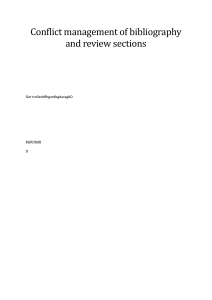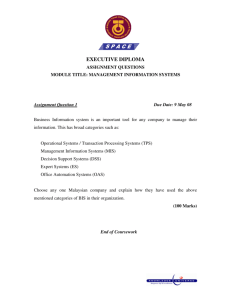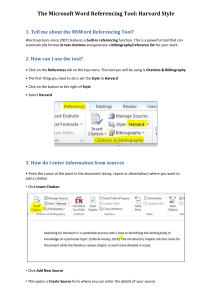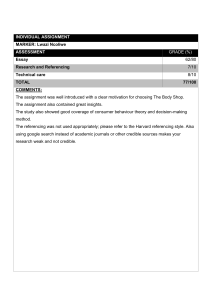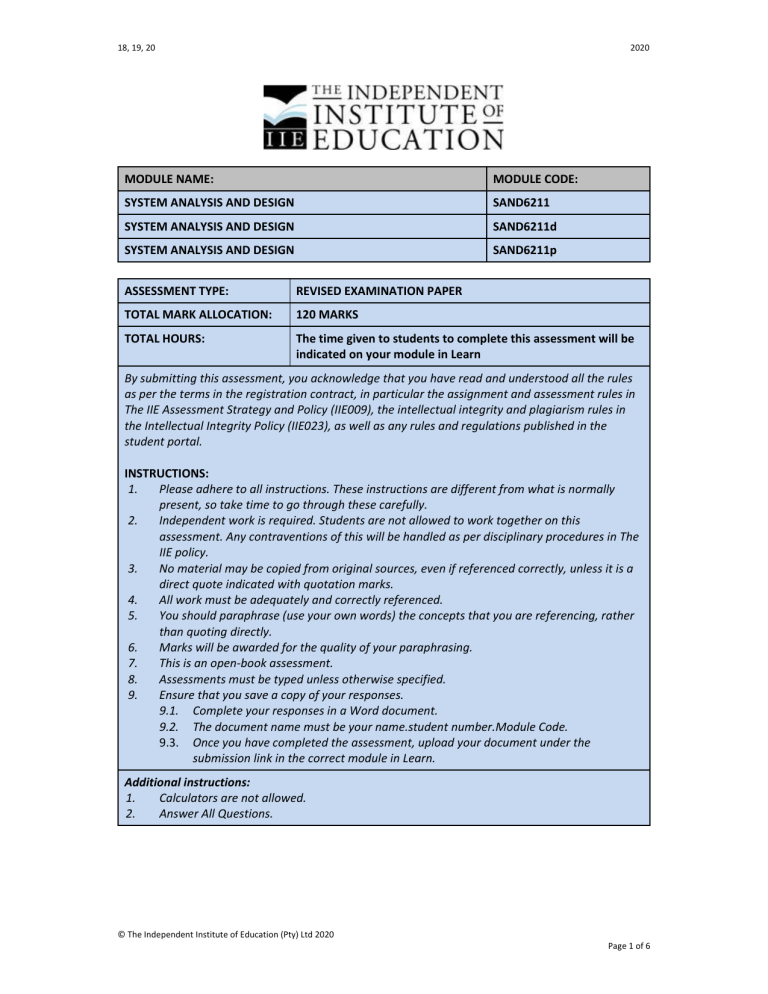
18, 19, 20 2020 MODULE NAME: MODULE CODE: SYSTEM ANALYSIS AND DESIGN SAND6211 SYSTEM ANALYSIS AND DESIGN SAND6211d SYSTEM ANALYSIS AND DESIGN SAND6211p ASSESSMENT TYPE: REVISED EXAMINATION PAPER TOTAL MARK ALLOCATION: 120 MARKS TOTAL HOURS: The time given to students to complete this assessment will be indicated on your module in Learn By submitting this assessment, you acknowledge that you have read and understood all the rules as per the terms in the registration contract, in particular the assignment and assessment rules in The IIE Assessment Strategy and Policy (IIE009), the intellectual integrity and plagiarism rules in the Intellectual Integrity Policy (IIE023), as well as any rules and regulations published in the student portal. INSTRUCTIONS: 1. Please adhere to all instructions. These instructions are different from what is normally present, so take time to go through these carefully. 2. Independent work is required. Students are not allowed to work together on this assessment. Any contraventions of this will be handled as per disciplinary procedures in The IIE policy. 3. No material may be copied from original sources, even if referenced correctly, unless it is a direct quote indicated with quotation marks. 4. All work must be adequately and correctly referenced. 5. You should paraphrase (use your own words) the concepts that you are referencing, rather than quoting directly. 6. Marks will be awarded for the quality of your paraphrasing. 7. This is an open‐book assessment. 8. Assessments must be typed unless otherwise specified. 9. Ensure that you save a copy of your responses. 9.1. Complete your responses in a Word document. 9.2. The document name must be your name.student number.Module Code. 9.3. Once you have completed the assessment, upload your document under the submission link in the correct module in Learn. Additional instructions: 1. Calculators are not allowed. 2. Answer All Questions. © The Independent Institute of Education (Pty) Ltd 2020 Page 1 of 6 18, 19, 20 2020 Referencing Rubric Providing evidence based on valid and referenced academic sources is a fundamental educational principle and the cornerstone of high‐ quality academic work. Hence, The IIE considers it essential to develop the referencing skills of our students in our commitment to achieve high academic standards. Part of achieving these high standards is referencing in a way that is consistent, technically correct and congruent. This is not plagiarism, which is handled differently. Poor quality formatting in your referencing will result in a penalty of a maximum of ten percent being deducted from the percentage awarded, according to the following guidelines. Please note, however, that evidence of plagiarism in the form of copied or uncited work (not referenced), absent reference lists, or exceptionally poor referencing, may result in action being taken in accordance with The IIE’s Intellectual Integrity Policy (0023). Required: Technically correct referencing style Consistency The same referencing format has been used for all in‐text references and in the bibliography/reference list. Technical correctness Referencing format is technically correct throughout the submission. Position of the reference: a reference is directly associated with every concept or idea. For example, quotation marks, page numbers, years, etc. are applied correctly, sources in the bibliography/reference list are correctly presented. Congruence between in‐text referencing and bibliography/ reference list All sources are accurately reflected and are all accurately included in the bibliography/ reference list. In summary: the recording of references is accurate and complete. Markers are required to provide feedback to students by indicating (circling/underlining) the information that best describes the student’s work. Minor technical referencing errors: 5% deduction from the overall percentage – the student’s work contains five or more errors listed in the minor errors column in the table below. Major technical referencing errors: 10% deduction from the overall percentage – the student’s work contains five or more errors listed in the major errors column in the table below. If both minor and major errors are indicated, then 10% only (and not 5% or 15%) is deducted from the overall percentage. The examples provided below are not exhaustive but are provided to illustrate the error Minor errors in technical correctness of referencing style Deduct 5% from percentage awarded Minor inconsistencies. The referencing style is generally consistent, but there are one or two changes in the format of in‐text referencing and/or in the bibliography. For example, page numbers for direct quotes (in‐text) have been provided for one source, but not in another instance. Two book chapters (bibliography) have been referenced in the bibliography in two different formats. Generally, technically correct with some minor errors. The correct referencing format has been consistently used, but there are one or two errors. Concepts and ideas are typically referenced, but a reference is missing from one small section of the work. Position of the references: references are only given at the beginning or end of every paragraph. For example, the student has incorrectly presented direct quotes (in‐text) and/or book chapters (bibliography/reference list). Generally, congruence between the in‐text referencing and the bibliography/ reference list with one or two errors. There is largely a match between the sources presented in‐text and the bibliography. For example, a source appears in the text, but not in the bibliography/ reference list or vice versa. In summary, at least 80% of the sources are correctly reflected and included in a reference list. Major errors in technical correctness of referencing style Deduct 10% from percentage awarded Major inconsistencies. Poor and inconsistent referencing style used in‐ text and/or in the bibliography/ reference list. Multiple formats for the same type of referencing have been used. For example, the format for direct quotes (in‐text) and/or book chapters (bibliography/ reference list) is different across multiple instances. Technically incorrect. The referencing format is incorrect. Concepts and ideas are typically referenced, but a reference is missing from small sections of the work. Position of the references: references are only given at the beginning or end of large sections of work. For example, incorrect author information is provided, no year of publication is provided, quotation marks and/or page numbers for direct quotes missing, page numbers are provided for paraphrased material, the incorrect punctuation is used (in‐text); the bibliography/reference list is not in alphabetical order, the incorrect format for a book chapter/journal article is used, information is missing e.g. no place of publication had been provided (bibliography); repeated sources on the reference list. A lack of congruence between the in‐text referencing and the bibliography. No relationship/several incongruencies between the in‐text referencing and the bibliography/reference list. For example, sources are included in‐text, but not in the bibliography and vice versa, a link, rather than the actual reference is provided in the bibliography. In summary, at least 60% of the sources are incorrectly reflected and/or not included in reference list. Overall Feedback about the consistency, technical correctness and congruence between in‐text referencing and bibliography: .................................................................................................................................................................................................................................................................................................... © The Independent Institute of Education (Pty) Ltd 2020 Page 2 of 6 18, 19, 20 2020 Question 1 (Marks: 30) Answer all of the questions below. Q.1.1 Briefly explain the purpose of SDLC and list the first two core processes for it. (4) Q.1.2 Briefly explain, in your own words, what computer application is and provide one (3) practical example. You will receive more marks for your own original examples than for examples in your textbook, from your lecturer, or on Learn. Q.1.3 Distinguish between internal and external stakeholders in systems analysis. (4) Q.1.4 Distinguish between a superclass and subclass in a generalisation/specialisation (6) relationship and provide an example for each. Q.1.5 List any three types of output controls that can be applied to maintain the integrity (3) of any system. Q.1.6 Distinguish between predictive approach to SDLC and adaptive approach to SDLC. (4) Q.1.7 Explain what Affordance and Visibility are, in user interface design and provide real (6) life examples. You will receive more marks for your own original examples than for examples in your textbook, from your lecturer, or on Learn. © The Independent Institute of Education (Pty) Ltd 2020 Page 3 of 6 18, 19, 20 2020 Question 2 (Marks: 30) The questions below relate to the following case study: System: Test Score System As a Systems Analyst, you are appointed to document requirements of a Test Score System. You are also required to study agile project management approach and apply it in the project. As part of the business process, the lecturer marks all the student papers, aggregates the scores and captures them. The Head of Department oversees the work of the lecturer. His duties in this regard include moderation of papers, amendment and approval of the scores, and the submission of the scores to the admin office. The test scores are captured per course, a course belongs to a department and a department belongs to a faculty. Students can enrol for more than one course and lecturers are allowed to facilitate many courses. The Test Score System should also have a functionality for students to check their scores, lodge a dispute on scores they have a problem with, rate the course and chat with lecturers. Q.2.1 Develop a simple UML activity diagram to model the activities between the (11) lecturer and the Head of Department. Q.2.2 Identify six entities from the case study and draw an Entity Relationship Diagram (14) (ERD) using the correct cardinality symbols to present the relationships amongst the entities. You do not have to include attributes for any of the entities. Q.2.3 Once the new system has been developed and tested, it must be placed into (5) operation. Describe SDLC deployment activities. © The Independent Institute of Education (Pty) Ltd 2020 Page 4 of 6 18, 19, 20 2020 Question 3 (Marks: 30) The questions below are still based on the case study in Question 2. Q.3.1 Since you will be applying agile project management, identify and discuss a process (6) you will put in place to control the scope of the project. Q.3.2 The case study has numerous use cases and detailed information about use cases (3) is described with a use case description. List any three aspects of a use case covered in a use case description. Q.3.3 Identify use cases in relation to the student’s interaction with the Test Scores (9) System and develop a use case diagram. Q.3.4 Distinguish between a User Story and a Use Case and provide an example for each, (8) Q.3.5 Designing the user interface for smartphones has several items affecting layout (4) and formatting. List any four of the items. Question 4 (Marks: 30) Answer all of the questions below. Q.4.1 Discuss the purpose of source code control in software development. Description Discussion is taken directly from the textbook/lecturer (8) Marks 1‐ 3 Marks material/Learn. Discussion is taken directly from the textbook/lecturer 4 ‐ 6 Marks material/Learn AND has been paraphrased. Original discussion and relevant. 7 ‐ 8 Marks © The Independent Institute of Education (Pty) Ltd 2020 Page 5 of 6 18, 19, 20 Q.4.2 2020 Briefly explain what a product backlog is and discuss its overall purpose in agile (4) development. Q.4.3 Distinguish between a unit testing and integration testing and provide an (6) example for each. Q.4.4 In today’s interconnected world, systems need reliable access control systems to (3) keep the data secure. Define the three elements that access control systems rely on. Q.4.6 Distinguish between functional and non‐functional requirements and provide (5) three examples of non‐functional requirements. Q.4.7 Describe two important keys that are used to enforce referential integrity in a (4) database. END OF PAPER © The Independent Institute of Education (Pty) Ltd 2020 Page 6 of 6
